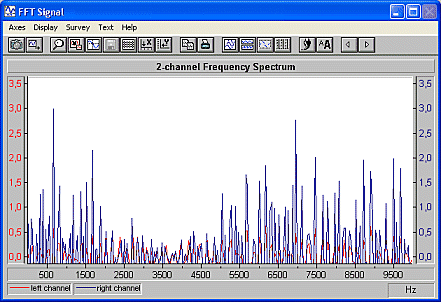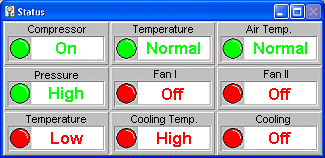
About DASYLab |
 |
It has
always been our challenge to make DASYLab easy-to-use - now you have a
chance to find out whether we've succeeded. Even most sophisticated
acquisition and control tasks can be solved with DASYLab quickly and without any
additional programming. Simply insert the appropriate module symbols
into the worksheet and connect them by wires - all this with no more
than a few mouse clicks. The module symbols represent inputs or
outputs, display instruments or any of the many operations provided
by the program; the data channels represent the signal flow.
|
Whatever your requirements in the control and instrumentation environment, DASYLab can meet your needs. From research and analysis to large-scale production and quality control, DASYLab is flexible enough to meet any requirement. More than 250 data acquisition boards and systems are supported through special drivers. If you wish to develop your own driver , we provide a toolkit. Data acquisition hardware is connected to DASYLab through the RS232 and/or IEEE bus modules. You can exchange data between DASYLab and other Windows applications via DDE.
 |
DASYLab allows fast sampling rates, even under Windows. Given the proper hardware, data can be acquired at rates of more than 1 MHz and can continuously be displayed online at more than 200 KHz (depending on hardware platform). Fast and complete online-saving of measurement values is possible using the DASYLab disk streaming feature. If fast controllers are installed in the system, transfer rates to the hard disk can reach more than 200 KHz. You can save up to 512 channels in the same file. |
 |
|
| Use the Y/t and X/Y modules with their wide range of options for the display of high-speed data. The optional sonogram available in Y/t graph shows values coded with different colors or gray scale for different ranges of amplitudes. | |

|

|

|
This powerful extension of DASYLab is able to communicate with and control remote copies of DASYLab Net .
DASYLab Net features:
Many devices and instruments can communicate with the PC via the standard RS232 interface. The versatile RS232 modules can communicate with a wide variety of devices, parse their measurement data, and send control commands directly from the worksheet.
DASYLab DDE input and output modules can now work as a DDE server or as a DDE client using all DDE link modes (hot link, warm link, cold link). In a client module, you can define application, topic and item of the DDE link; otherwise DASYLab is able to look for other in system announced DDE servers and show the available connections. If the module is defined as DDE server, >DASYLAB< is the name of the application, >SetData< or >GetData< is topic and the name of the module is the item of the DDE connection. the DDE output module is able to use up to 16 different items. these items can also be generated during measurement, so rows, lines and matrices such as in Microsoft excel are filled step by step. the DDE input module is able to mark received data with a time stamp or synchronize it with other data sources. all data values are transmitted in ASCII format.
USA SALES & TECHNICAL SUPPORT Cascade Group Inc. 68 West Main Street Oyster Bay, New York 11771 1-800-800-0588 fax: (516) 624-9363 email: sales@cascadegroupinc.com